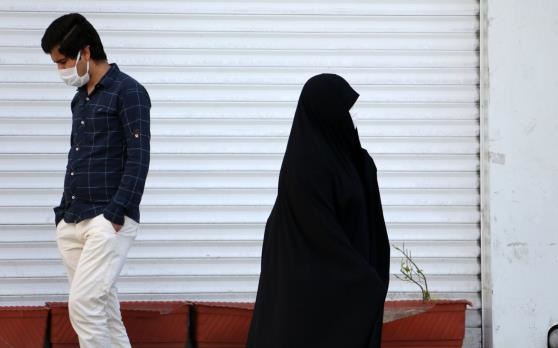Pedestrians walk past a closed shop in Tehran, Iran (Atta Kenare/AFP/Getty)
Iran has suffered a 15% drop in GDP because of Coronavirus, according to Economy and Finance Minister Farhad Dezhpasand.
Dezhpasand told Parliament on Sunday that Iran must live without oil income fall back on tax revenue to finance the Government’s budget of about $40 billion.
Amid long-term structural issues, corruption, and US sanctions, Iran’s GDP fell 7.6% in 2019. The International Monetary Fund has projected an 11% contraction this year in the economy of $439 billion.
On Sunday, the Health Ministry announced another 2,364 Coronavirus cases and 72 deaths, bringing the official totals to 171,789 cases and 8,281 fatalities.
The official toll hit a low of 803 cases on May 2, but the virus has resurged after the Government lifted restrictions to boost the economy. Last Thursday, official cases reached an all-time daily high of 3,574.
See Iran Daily, June 7: Coronavirus — State Media Finally Note “2nd Wave”
With oil exports falling between 80% and 95% and low global prices, Iran’s revenue is expected to be only $9 billion, compared to $62 billion in 2018.
Inflation is about 40%, with sharp price rises for food and essential goods, and the currency is near a record low at 176,700 rials to the US dollar.
On Sunday the Central Bank capped the amount of foreign currency that individuals can hold. Documents from credit institutions or the customs office must be obtained to keep more than 10,000 Euros ($11,300), and a renewal must be sought after six months.
Last November, there were four days of nationwide protests over economic conditions and corruption, sparked by a 50% to 200% rise in the price of petrol. Iranian security forces killed hundreds of demonstrators to suppress the marches.
See Iran Daily, May 30: “How Could They Shoot at a Kid?” — The State Violence Against Protesters

